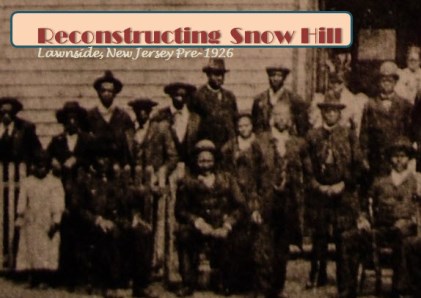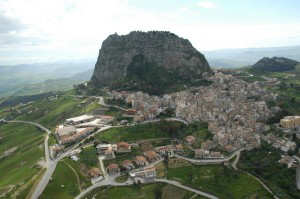Contact Us
By email:
info@one-place-studies.org
By post:
Society for One-Place Studies,
28 St Ronan’s Avenue,
Southsea, Hampshire, PO4 0QE
United Kingdom

Over the course of April we are exploring the studies registered with the Society for One-Place Studies featuring those that correspond to the relevant letter of the alphabet.
What is a One Place Study? That is a fine question and rather than me explain, I will refer you to the Society’s informative website. If you are interested in joining us and /or registering a study we of course welcome you. You can find the joining information HERE.
S is for...
Scar Village, Nidderdale: This North Yorkshire study is fascinating because the place only existed for a period of about twenty years. It has been registered with the Society for One-Place Studies by Dawn, who has her own ancestry deep within the fibres of this parish. I am not going to tell you more about it, because I think you should head over to the profile page and read all about it. If you have a connection to Scar Village, please contact Dawn via email.

Snow Hill: For this study we head across the Atlantic to the United States. Snow Hill, or as it was known pre 1926, Lawnside, is located in the State of New Jersey. The study began as a tribute to a community that has given so much to the study host. What a lovely sentiment that is!
The town is small, comprising of just 1.4 square miles and for a time was the only town in New Jersey of African American heritage. Registered with the Society for One-Place Studies by Shamele, the study has its own website, which is well worth a visit as it brings to life a fascinating history.

Somers Town: Located in what is known as Greater London, this study, which is registered with the Society for One-Place Studies, is an example of how a study can be established within even the largest of cities. The study is being carefully and methodically pieced together by Tony who is the study host, as he focuses on the last 150 years using the oral history of his mother to give a strong foundation to the study. If your ancestors connect to this part of London, please contact Tony.

Springhill, Higher Cloughfold: This Lancashire study is registered with the Society for One-Place Studies by the study's host, Janet. Here is what Janet had to say about her study:
“Springhill, a collection of houses in the Higher Cloughfold area of Rossendale, Lancs. It is currently made up of 12 houses but this number has increased and decreased over the years as outbuildings have been converted to dwellings, a large house subdivided and smaller cottages knocked through. It is not special – nobody famous lived here and no national events occurred here. Yet this study illustrates many of the things which make a one-place study fascinating and frustrating. Sadly, they don’t all begin with ‘S’.
The first is a sense of identification with the place which often drives the study in the first place. Five generations of my family have lived in our house – each with different birth surnames so not obvious from the records. The history of my family is inexorably linked with the history of our house, and that of the larger house of which it was once part, and that of the estate attached to that mansion, and the village in which it is located, most of which was owned by the mansion owner.
This leads to the second illustration, that of boundaries. ‘Springhill’ as such only exists as a postal district. It isn’t marked on a map and many locals wouldn’t be able to give directions. Higher Cloughfold, the village, is on the map but has no clearly defined boundaries and merges into the next village. My ‘one place’ includes what I want it to include, which is fine as long as that is upfront.
Not being a defined place leads to problems with sources and source generation. In the past 150 years, it has been part of 4 different local government administrations, 3 parishes and 3 parliamentary constituencies. All of these have widely different boundaries and contain areas with no historical or cultural affinity to each other. The 1911 census enumeration district boundary runs straight through the village, the 1841 equivalent doesn’t. These things make it very difficult to compare data over time or to compare civil and parish records.
The other problem with sources is survival or rather non-survival. There are no tithe map or enclosure records, the voters’ lists are missing for 40 years, the local paper was based 8 miles away until 1883. On the plus side, the parish records go back to the 16th century and the tenancies were copyhold until 1926 with the court rolls available. It would be helpful if place names were more specific – give us a clue where is ‘the big field’ or ‘the cow pasture’?
So why bother? The fun of the search and the delight when a gem is unearthed. The links across the centuries – Christopher Tattersall was fined for failing to maintain a highway in 1534 and the way in question is still impassable after rain. The questions raised – why does the area have two seventeenth century nonconformist places of worship (both still in use)? The amusement of everyday life – Charles Patrick, a major landowner, had his name taken in vain in an attempt to procure some rabbits. The legend of the previous resident, onetime headmaster of the local school, whose ghost is said to walk the balcony. The insights into how people thought and lived. The fun of putting it all together. Learning from people with similar interests (www.one-place-studies.org). Most of all the sense of connectedness to a place which features strongly in my being who I am."

St Blazey: From Lancashire, we head south to the English County of Cornwall. Registered with the Society for One-Place Studies, the study covers the period to 1860, with the most focus on the 1813-1835 period. The study is a reconstruction of the families of St Blazey based upon various documentary records. The study is registered by Wesley who has an informative website on the parish.

Sutera: Leaving the shores of England we head across Europe to Sicily and the location of my own study which is registered with the Society for One-Place Studies. Although the origins of this study go back to the late 1980’s, the study is still in its infancy. The Italians are notoriously poor at being interested in their ancestry and this study is entwined with my own Italian ancestry and my surname study for the name of Orlando.
The area is well known for archaeological studies with the foundations to the local area heading back to the seventh century. There is a website about the study and if you have an interest in Sutera I would be delighted to hear from you.

Julie Goucher, A-Z Challenge Coordinator, with input from Society member, Janet Barrie
1 Comment
charlotte
I didn’t know about this, it’s really interesting. Nice to meet and connect through atozchallenge. http://aimingforapublishingdeal.blogspot.co.uk/